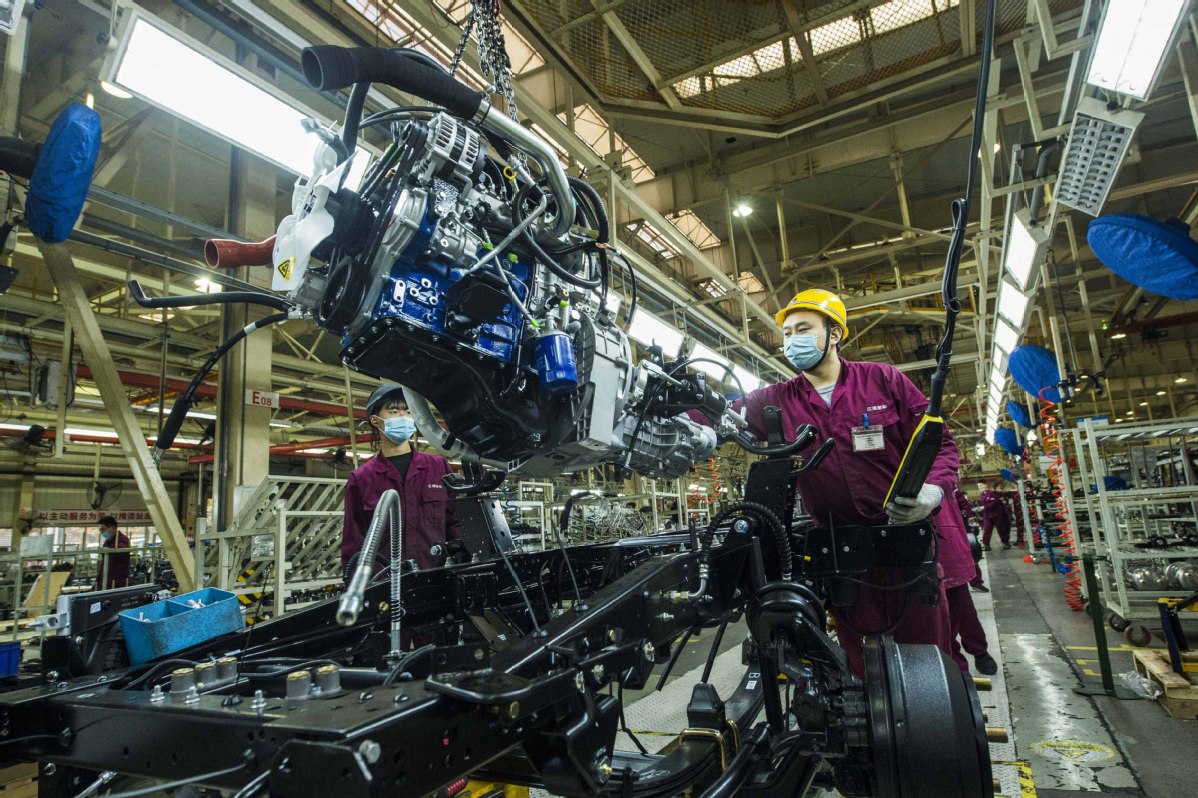Factory activity rises to near decade-high
By Jiang Xueqing | China Daily | Updated: 2020-11-03 09:06

PMI growth shows business sentiment improving steadily, says Caixin survey
Factory activity expanded in China for the sixth straight month in October amid a strong resurgence in business confidence, a private survey showed on Monday.
The Caixin China General Manufacturing Purchasing Managers' Index came in at 53.6 for October compared with 53.0 in September. It was also the highest reading since January 2011, according to survey data released by media group Caixin and information provider IHS Markit. A PMI reading above 50 reflects economic expansion, while one below 50 indicates contraction.
The Caixin manufacturing PMI, which surveys more small and medium-sized enterprises and export-oriented enterprises located in eastern coastal regions, recorded a growth in October as against the market expectations of a moderation. The current reading, coupled with the still-solid official PMIs released earlier, suggests China's growth recovery remained on track last month, said Lu Ting, chief China economist at Nomura and other experts, in a research note.
Manufacturing demand and supply were both active, as the fallout from the COVID-19 pandemic gradually faded. The subindex of total new orders rose sharply in expansionary territory, hitting the highest since November 2010.
Enterprises continued to increase purchases and their raw material inventories grew in response to the fast growth in orders. In October, quantity of purchases index reached the second-highest level in over seven years, according to the survey.
"The Caixin manufacturing PMI's rise in October was broad-based but led mainly by the new orders and stocks of purchases subindices, which rose to 57.0 and 52.1, respectively, in October from 55.5 and 51.3 in September. This, together with the fall in the new export orders subindex, suggests domestic demand may have played a key role in driving the recovery among SMEs in October," Lu said in the note.
The Fifth Plenary Session of the 19th Central Committee of the Communist Party of China, which concluded on Thursday, proposed major social and economic development targets for the 14th Five-Year Plan (2021-25) period. The domestic market will become stronger, the economic structure will be further improved, and the innovation capacity will be significantly strengthened, said a communique released after the session.
Market entities will show more vitality, and significant progress will be made in property rights reform and the reform to promote market-based allocation of production factors, it said.
Wang Zhe, a senior economist at Caixin Insight Group, said recovery was the key word for the macroeconomy as the domestic epidemic situation is largely under control.
"As the economic indicators for consumption, investment and industrial output for September were generally better than expected, it is highly likely that the economic recovery will continue for the next several months. But there are still many uncertainties outside of China, so policymakers need to be cautious about normalizing post-coronavirus monetary and fiscal policies," Wang said.
He said that the twists and turns of overseas infections remained a headwind for exports. The survey found that although the measure for new export orders stayed in expansionary territory in October for the third month in a row, overseas demand recovered at a much slower pace than in September.
This is likely due to the re-implementation of lockdown measures in Europe and the US amid new waves of COVID-19 infections, said HSBC economist Chen Jingyang.
"Looking forward, while rising domestic consumption can continue to support manufacturing, uncertainties over overseas COVID-19 infections remain a threat for exports and overall growth," Chen said in a report.
Moreover, in spite of a steady market recovery, many enterprises did not add staff in an effort to keep costs under control. This means that job recovery should remain a top policy priority, as it is essential for sustained growth in household consumption and the overall services sector, she said.
























